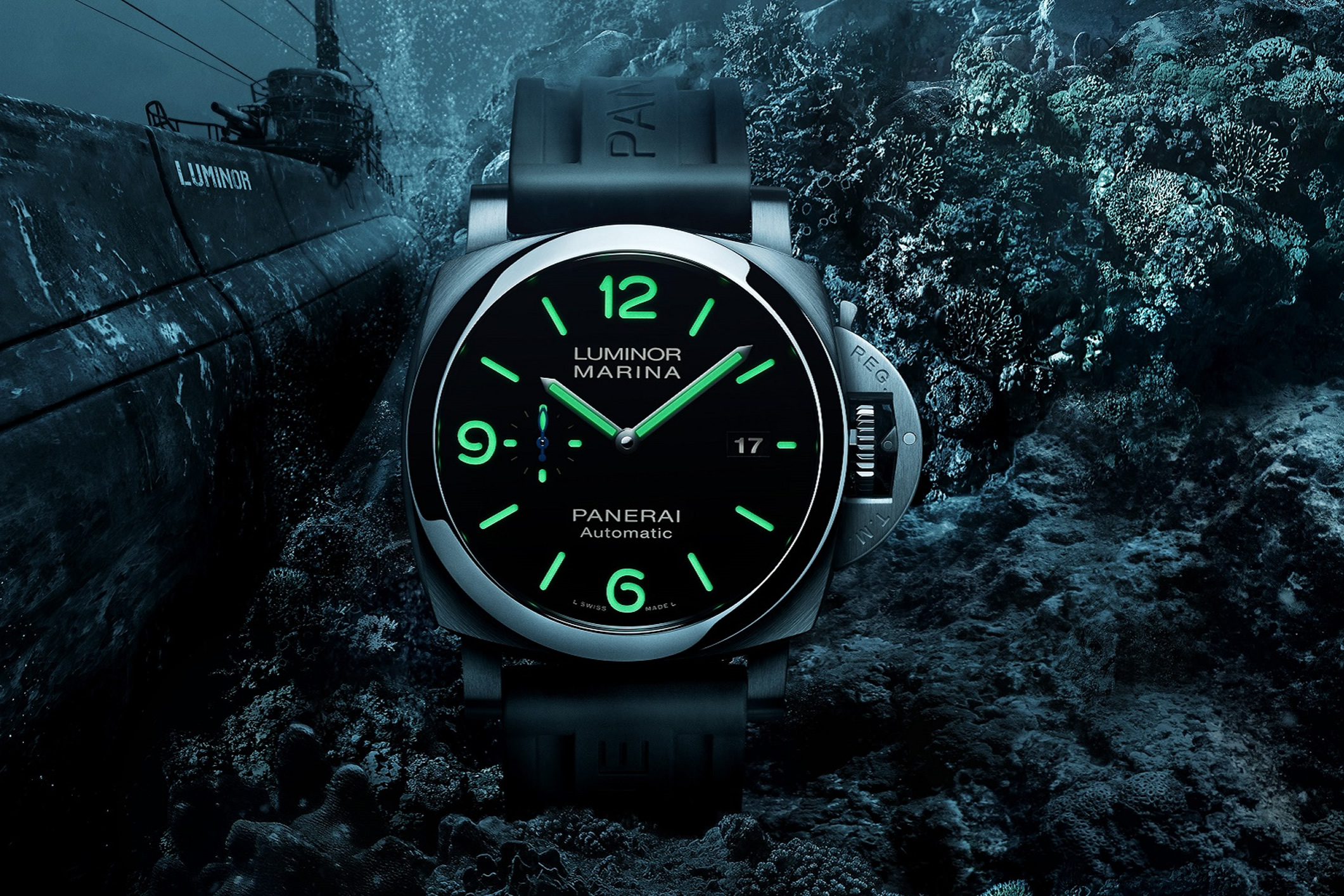
|




| |
|
Keep posted of all our news, product novelties and events. | |
|
| |
|
Your message has been send successfully
Fields with * are mandatory
The email is incorrect, please enter a valid email
| |
Rolex Section
While navigating on the Rolex section of our website, you may interact with an embedded website from www.rolex.com. In such case Terms of Use, Privacy Notice and Cookies Policy of www.rolex.com are sole applicable.
Cartier Section
In the Cartier section of the website, please be aware some of the cookies and the collection of these cookies is controlled by Cartier S.A together with YOOX Net-a-Porter Group S.P.A. Cartier processes cookies in order to better understand your user journey and their products, with your consent. Please visit this webpage to find out more Privacy & cookies - Cartier. Cartier uses functional, analytical, advertising and social cookies with your prior consent. Third party cookies are used for purposes specific to these third parties and set out in more detail in Cartier’s Cookie Policy. For any questions please contact Cartier by email at: clientes.cartier@cartier.com
Rolex Section
While navigating on the Rolex section of our website, you may interact with an embedded website from www.rolex.com. In such case Terms of Use, Privacy Notice and Cookies Policy of www.rolex.com are sole applicable.
Cartier Section
In the Cartier section of the website, please be aware some of the cookies and the collection of these cookies is controlled by Cartier S.A together with YOOX Net-a-Porter Group S.P.A. Cartier processes cookies in order to better understand your user journey and their products, with your consent. Please visit this webpage to find out more Privacy & cookies - Cartier. Cartier uses functional, analytical, advertising and social cookies with your prior consent. Third party cookies are used for purposes specific to these third parties and set out in more detail in Cartier’s Cookie Policy. For any questions please contact Cartier by email at: clientes.cartier@cartier.com
At Relojeria Alemana We use our own and third-party cookies to improve your experience and produce statistics. We understand that when browsing or using our services, the user accepts the use of cookies. However, the user has the possibility to modify the configuration of cookies in the browser as we will explain later.
What are cookies?
A cookie is a small file and holds a certain amount of data, which our website can send to your browser. It may then be stored on your computer's hard drive and can be accessed by our web server. This cookie data can then be retrieved and can allow us to customise our web pages and services accordingly and offer a better service. It is important to clarify that cookies do not collect any personal data stored on your hard drive or computer.
Change cookie settings on your browser
You can also set up your browser to receive information each time a cookie is installed, or even to restrict or block cookies. If you want to change the configuration of your browser's cookies you can check these pages: Internet explorer, Firefox, Chrome, Safari.
Cookies we use at Relojeria Alemana
Relojeria Alemana uses both temporary session cookies and permanent cookies. Session cookies store data only while the user accesses the website, on the other hand, permanent cookies store data in the terminal to be used in more than one session.
The cookies we use at Relojeria Alemana are the following:
Session, technical and functional cookies:
They are all those cookies that make browsing through the website possible, as well as the use of different options or services. On the one hand session cookies allow access to secure areas, on the other hand, technical and functional cookies allow us to make forms, store contents for sharing videos.
Personalization cookies
Personalization cookies allow the user to access the website with some predefined features. An example would be the design of contents according to the device or the language.
Analysis cookies
These cookies allow the tracking and analysis of the behavior of users on the website. This information collected measures the activity on the website for the preparation of user navigation profiles in order to improve our site.
Rolex Section
In the Rolex section of our website, some cookies are controlled by ROLEX S.A. in accordance with the following Cookie Policy.
Rolex (Adobe Analytics y Content Square)
Adobe Analytics y Content Square cookies are used in the Rolex section to differentiate requests from different browsers and to store helpful information that an application can use later.
They can also be used to associate browsing information to customer records. More information:
Rolex Privacy
Adobe Analytics
Content Square
Cartier Section
In the Cartier section of the website, please be aware some of the cookies and the collection of these cookies is controlled by Cartier S.A together with YOOX Net-a-Porter Group S.P.A. Cartier processes cookies in order to better understand your user journey and their products, with your consent. Please visit this webpage to find out more Privacy & cookies - Cartier. Cartier uses functional, analytical, advertising and social cookies with your prior consent. Third party cookies are used for purposes specific to these third parties and set out in more detail in Cartier’s Cookie Policy. For any questions please contact Cartier by email at: clientes.cartier@cartier.com
Third party cookies
We use third-party cookies to manage and improve the services offered. Relojeria Alemana can not be held responsible for the privacy policies of third-party cookies.
On our website, we use Google Analytics, a web analytics service developed by Google, Inc., which allows the measurement and analysis of navigation on web pages.
Google, Inc., is a Delaware company whose main office is at the 1600 Amphitheater Parkway, Mountain View (California), CA 94043, United States ("Google"), like many other services, Google Analytics uses cookies. The information generated by the cookie about the use by the user of our website (including your IP address) will be directly transmitted and filed by Google on servers in the United States. Google will use this information on our own for the purpose of tracking the use of the website, compiling reports on the activity of the website and providing other services related to the activity of the website and the use of the Internet. Google may transmit such information to third parties when required by law, or when such third parties process the information on behalf of Google. Google will not associate your IP address with any other data held by Google.
If you want to know more information about Google analytics cookies you can access here
The European data protection regulation, better known as General Data Protection Regulation 2016/679 (EU) (hereinafter referred to as "GDPR"), was passed into law on 25 May 2016 and became fully applicable on 25 May
2018.
HERFU MALLORCA GESTIÓN SL is ready to take on the new commitments required by the regulation in the area of personal data protection, offering you a service tailored to the requirements of the legal framework.
Accordingly, this circular is to inform you of the most important changes included in this European regulation on personal data protection, enumerating some of the changes and new features arising from its application:
• Expanded rights as data subject, including new features such as the right to be forgotten and the right to data portability.
• The role of the Data Protection Officer.
• The obligation to obtain consent by means of a clear or affirmative action by the data subject.
• The emergence of new legal bases that allow data processing.
• The obligation to report security breaches that pose a risk to data subjects' rights and freedoms.
HERFU MALLORCA GESTIÓN SL informs you that we continue to process your data on the basis of:
• The data subject's consent
• Compliance with a law
• The existence of a legitimate interest on the part of HERFU MALLORCA GESTIÓN SL
• Performance of the contract
In accordance with the rights conferred by current applicable data protection legislation, you may exercise the rights of access, rectification, restriction of processing, erasure ("right to be forgotten"), portability
and objection to processing of your personal data, and also withdraw your consent to such processing, by sending your request to the postal address COLON 14, 07001 PALMA DE MALLORCA (BALEARIC ISLANDS) or to the e-mail address
marketing@relojeriaalemana.com. You may also contact the appropriate Supervisory Authority to lodge any complaint you consider appropriate.
If you wish further information about the procedures and protocols put in place by HERFU MALLORCA GESTIÓN SL, you can contact the Data Protection Officer by writing to the e-mail address
dpd.cliente@conversia.es or by phone at 902 877 192.
RELOJERIA ALEMANA by itself or as an assignee, is the owner of all intellectual and industrial property rights in their website, as well as for all elements contained in the same (but not limited to, images, sound, audio, video, software or texts; trademarks or logos, color combinations, structure and design, selection of materials used, computer programs needed for its operation, access and use, etc.), ownership of RELOJERIA ALEMANA. Will, therefore, works protected as intellectual property of the Spanish legal system, benefitting both the applicable regulations and Spanish community in this field, such as the international treaties relating to the subject matter and signed by Spain.
All rights reserved. Under the provisions of articles 8 and 32.1, second paragraph, of the Intellectual Property Law, is expressly prohibited the reproduction, distribution and communication to the public, including its mode of making available, all or part of the contents of this web site for commercial purposes, in any medium and by any technical means, without the authorization of RELOJERIA ALEMANA.
The user undertakes to respect the rights of Intellectual and Industrial Property ownership of RELOJERIA ALEMANA. You can view the elements of the portal and even print them, copy them and store them on your computer's hard drive or any other physical support, as long as they are solely and exclusively for your personal and private use. The user shall refrain from deleting, altering, evade or manipulate any protection device or security system that was installed in the pages of RELOJERIA ALEMANA.
RELOJERIA ALEMANA also reserves the right to file civil or criminal actions deemed appropriate for the misuse of its website and content thereof, or for the
breach of these terms and conditions.
The relationship between the user and the service provider shall be regulated by existing Spanish laws and the law courts of SPAIN. In the event of any dispute
that may arise both parties shall submit their claims to arbitration panels or to an ordinary court of law, complying with regulations on jurisdiction and competence.
The official registered address of RELOJERIA ALEMANA is in Mallorca, Spain.